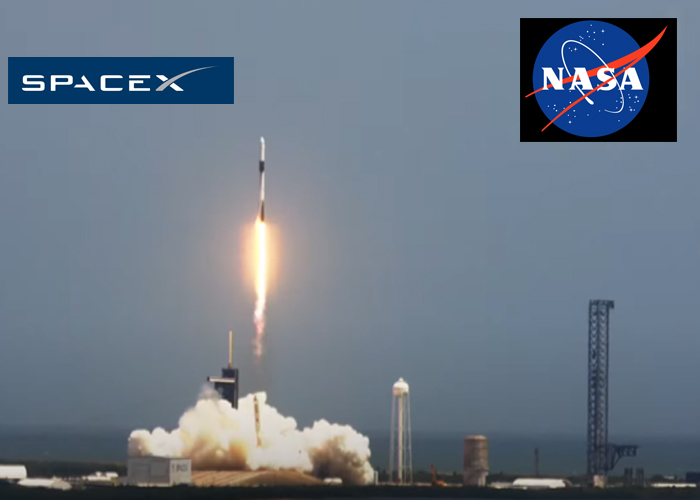Spacecraft With Solar Arrays, Research, Cargo To Space Station Launched
Two new solar arrays, science investigations, and supplies are on their way to the International Space Station.
Carrying more than 7,000 pounds of cargo to the orbiting laboratory, the uncrewed SpaceX Dragon spacecraft launched on the company’s Falcon 9 rocket at 11:47 a.m. EDT, Monday, from NASA’s Kennedy Space Center in Florida.
The cargo spacecraft is scheduled to autonomously dock with the space-facing port on the station’s Harmony module Tuesday morning and remain at the station for about 21 days, accordnig to NASA.
The SpaceX Dragon will deliver a pair of IROSAs (International Space Station Roll Out Solar Arrays) that, once installed, will expand the energy-production capabilities of the microgravity complex.
The spacecraft will also deliver a number of scientific investigations.
Thor-Davis, an investigation from European Space Agency, will observe thunderstorms from the space station. This vantage point will allow researchers to see the electrical activity from above, particularly the inception, frequency, and altitude of recently discovered blue discharges. Scientists plan to estimate the energy of these phenomena to determine their effect on the atmosphere. A better understanding of lightning and electrical activity in Earth’s atmosphere could improve atmospheric models and provide a better understanding of Earth’s climate and weather.
Plants exposed to environmental stress, including spaceflight, undergo changes to adapt, but those changes may not be passed on to the next generation. Plant Habitat-03 (PH-03) will assess whether plants grown in space can transfer such adaptations to the next generation and, if so, whether a change continues through subsequent generations or stabilizes.
The investigation will create a second generation of plants using seeds previously produced in space and returned to Earth. Results could provide insight into how to grow multiple generations of plants to provide food and other services on future space missions.
Telomeres, genetic structures that protect our chromosomes, shorten with age and wear. But research has shown that telomeres lengthen in space. Genes in Space-10 will test a technique for measuring telomere length in microgravity, where methods typically employed on Earth are difficult to use due to gravity. The experiment will explore whether telomere lengthening in space is caused by proliferation of stem cells -undifferentiated cells that give rise to specific body components and that typically have long telomeres.
Understanding the mechanism behind telomere lengthening could reveal possible effects on astronaut health during long-duration missions.
Source: Read Full Article

